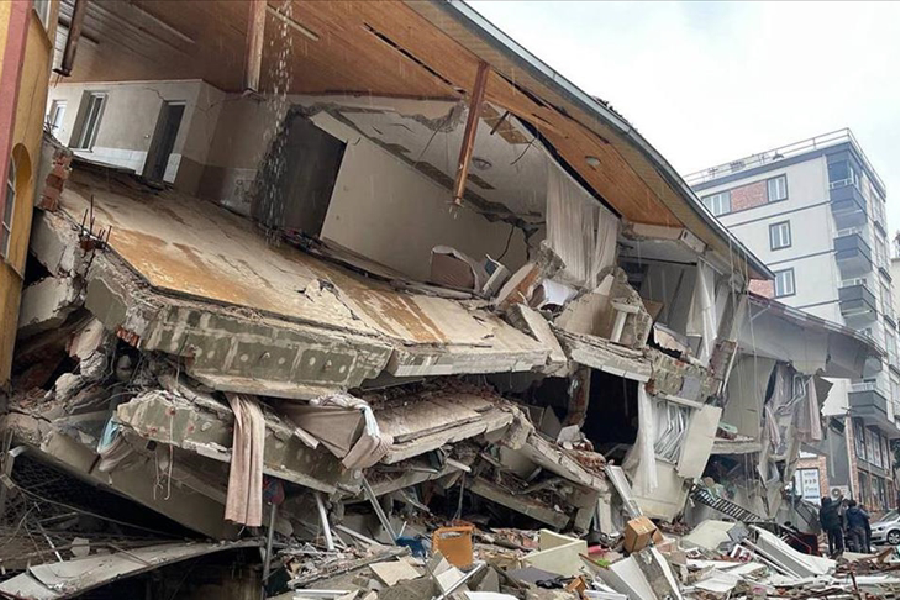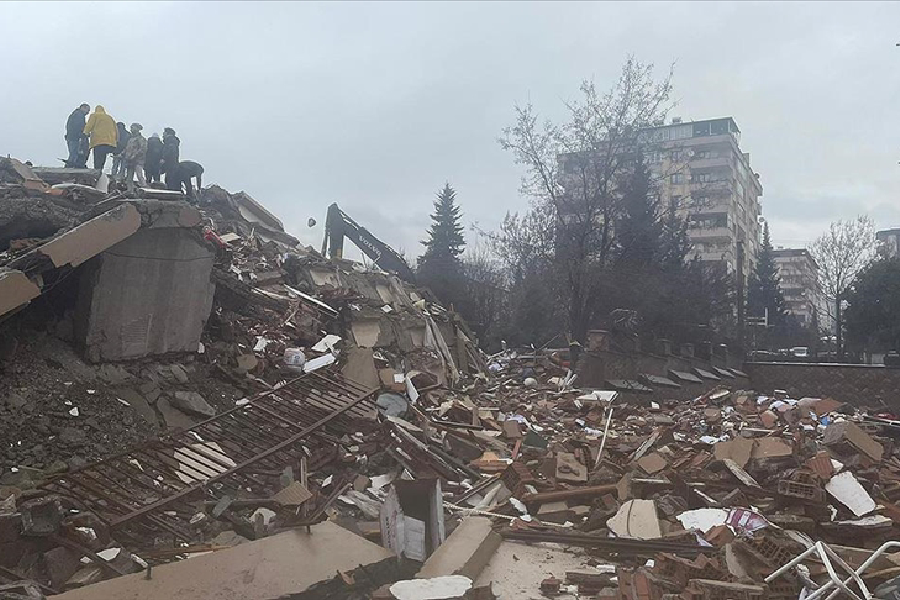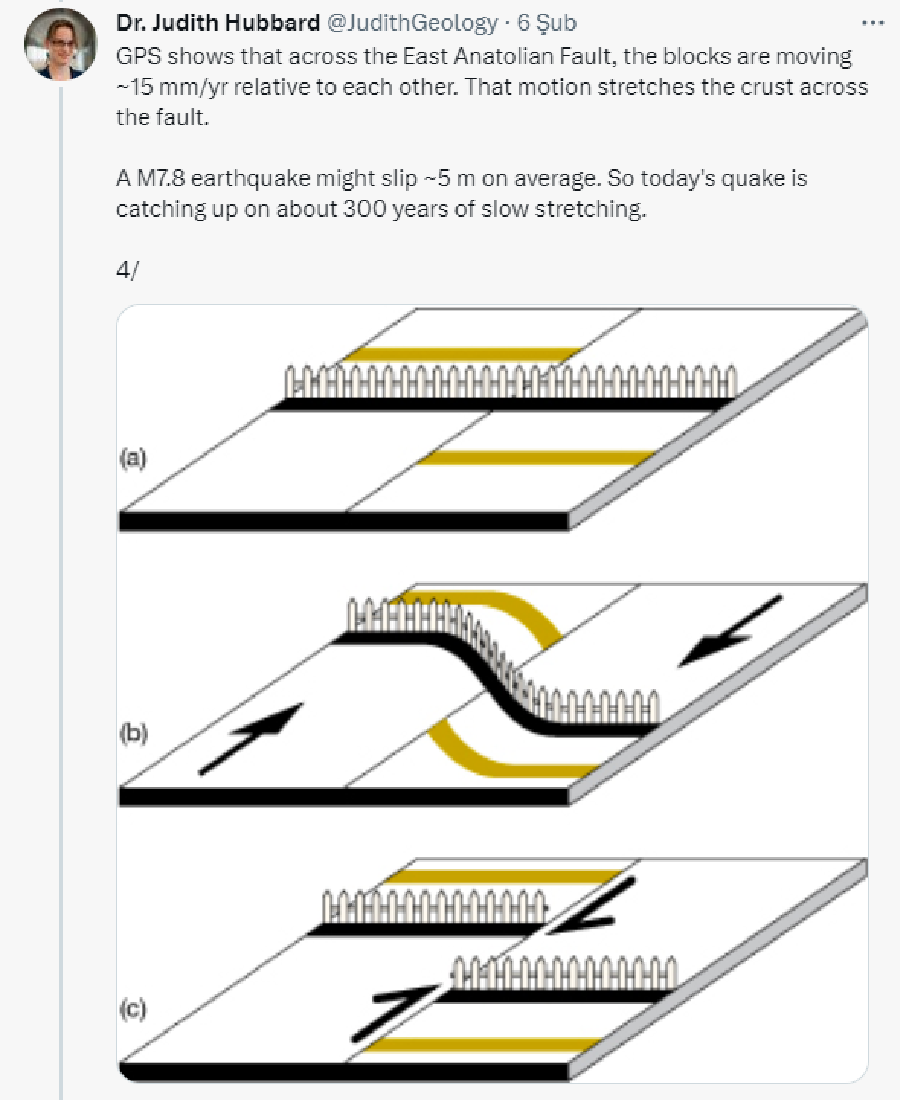US earthquake expert spoke: 'No earthquake of this magnitude has occurred on the same fault'
Department of Geology at Cornell University in New York, Assoc. Dr. Judith Hubbard spoke about the deadly earthquakes in Türkiye that killed thousands of people. The expert said that such an earthquake is extraordinary.
Doing earthquake research in the Department of Geology at Cornell University in New York, Assoc. Dr. Judith Hubbard analyzed (according to measurements in the USA) 7.8 and 7.5 earthquakes in Türkiye.
Assoc. Dr. Hubbard stated that he has been conducting earthquake research in various parts of the world for 20 years. Hubbard, in his studies, described the earthquakes in the southeastern region of Türkiye as "more complex than many earthquakes that occurred". Hubbard contunued with the words, “So many different faults seem to have ruptured, and then what I think everybody noticed was utter destruction.”
‘LARGE EARTHQUAKES ARE ALWAYS A SURPRISE’
Stating that the earthquakes were always unexpected, the US academic said that the Türkiye-centered earthquake on Monday was not much different:
“Large earthquakes are always a surprise — and always inevitable. Monday’s deadly events in Türkiye and Syria are no different. The fault system that caused them and the region’s seismicity are well documented from painstaking field studies, historical records and geophysical observations over many decades. Yet no seismologist could have predicted the exact location, time and magnitude of this week’s quakes.”
"The footage of the destruction of buildings is so tragic... And it remains very unique compared to previous earthquakes. So the combination of the extent of the destruction and the visibility of the destruction is really shocking," Hubbard said.

HE SAID THESE EARTHQUAKEES WERE 'EXTRAORDINARY'
Judith Hubbard, who made a statement about the earthquake that affected more than 13 million people in 10 provinces in Türkiye and in northern Syria, explained her surprise about the earthquakes with the following words:
"I heard wrong at first that there was an earthquake in Türkiye. I heard it was 6.7 magnitude and my first thought was, 'Oh no, it's 6.7 magnitude and could be quite damaging to Türkiye' but then I looked online and saw that it was just an aftershock. I was devastated when I realized that the real earthquake was 7.8 magnitude."
Hubbard said that the earthquake that caused great destruction and loss of life in Türkiye and Syria was a tectonic earthquake, and that with the Arabian plate moving to the north, it also activated different underground layers in Türkiye.
"You might think this earthquake is unusual because a magnitude 7.8 scale is larger than any previously detected on this fault system," said Academician Hubbard.

‘THE GROUND STILL REACTS TO THE FIRST BREAK'
Hubbard said that the last earthquake in Türikye was not very deep and that such earthquakes did more damage:
“Shallow earthquakes are worse. Because here people are closer to sliding and swinging. The earthquake itself lasted about 75 seconds. The shaking probably lasted much longer. Because the ground is still reacting to the first break." Hubbard continued his words, "The longer the shaking lasts, the more damage you will take."
The epicenter of the earthquake was located very close to the settlements. He stated that this creates an extremely destructive power. He said the following about the consecutive aftershocks:
“Aftershocks are a normal thing that happens after earthquakes and this is because all the faults in the area are suddenly re-stretched as the ground slides and so they respond to that stress by making their own little earthquakes, but here are more aftershocks as there are two big earthquakes breaking not one but two big faults and as a result doubles the amount of aftershocks.”
The US academic, who faced a devastating earthquake in Türkiye, explained that the region will not be safe from now on:
"The time after the earthquake is the time when there is the highest probability of another earthquake. The regions around the fault are now under extra stress."
'WE CAN'T EVEN PREDICT EARTHQUAKE'
Judith Hubbard, who has observed ground movements in various parts of the world from South Asia to the USA, explained that earthquakes are unpredictable with the following words:
"Earthquakes are inevitable. You can't stop them and we can't even predict them. But we can learn about them and find out how big they can be and what their impact will be. We can find out which places are at higher risk than others, and with tools like this we can become safer."
Stating that geoscientists see Turkey as a textbook when doing earthquake research, US academician Hubbard said:
"Because it is a truly fascinating tectonic environment. The Arabian plate collides in the north, in Eurasia, in the Himalayas, Iran or giant mountains in as we have seen in the Alps."
She made statements about the fact that there are more people in the world than before and there are settlements on fault lines, and this situation has devastating consequences.
‘NO SUCH EARTHQUAKE OCCURRED IN THE EASTERN ANATOLIA’
Hubbard pointed out that earthquakes of this magnitude have occurred in Türkiye before. "However, no earthquake of this magnitude has occurred on the same fault and in the broken East Anatolian fault system," he spoke.
Reminding that earthquakes triggered each other on the North Anatolian fault line between the 1930s and 1960s, Hubbard stated that although it is not known clearly, this could happen in the south as well. He stated that during the researches, a slip of about 3 meters was detected in some parts of the fault:
“This (3 meters) is a normal value for a 7.8 earthquake. The largest ever recorded was 50 meters, but this happened underwater in Japan in 2011 and was not experienced by any human. In the 7.9 earthquake that took place in China, a measurement between 8 and 10 meters was made.”
The earthquake expert, on Twitter after the earthquake in Türkiye, said, "In an earthquake with a magnitude of 7.8, there may be an average of 5 meters of slippage. In other words, today's earthquake is based on a stretch spread over a period of about 300 years." had evaluated.










